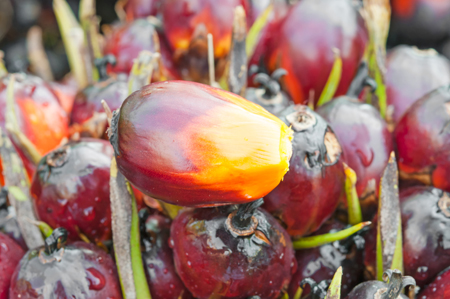Palm Oil Futures Hit 5-Month High, Despite Malaysia Stocks Rise
Category: Oilseeds
 (Agrimoney) – Palm oil futures jumped to a five-month high after Malaysian stocks were shown rising by less than many analysts had expected, sapped by unexpectedly high exports, boosted by Chinese orders.
(Agrimoney) – Palm oil futures jumped to a five-month high after Malaysian stocks were shown rising by less than many analysts had expected, sapped by unexpectedly high exports, boosted by Chinese orders.
Kuala Lumpur-traded palm oil futures for November touched 2,815 ringgit a tonne, the highest for a benchmark contract since late March, before easing back to 2,803 ringgit a tonne in late deals, a rise of 1.5% on the day.
The gains followed the release by the Malaysian Palm Oil Board sector regulator of data showing that the country’s palm oil stocks came in at 1.94m tonnes last month.
While up 157,000 tonnes month on month, and the highest in 18 months, the stocks estimate was below the roughly 2m-tonne figure that commentators that Agrimoney.com spoke to expected.
Unusual decline
Production last month fell 0.9% to 1.83m tonnes – a small fall, but an unusual one given that output is on its way to a seasonal peak in September-October.
Indeed, it was the first month-on-month fall in five years in August palm oil output in Malaysia, the second-ranked producer of the vegetable oil, after Indonesia.
However, this was a reflection of an unusually strong July output figure, in turn a reflection of a shortfall in June.
Alan Lim at Kuala Lumpur-based MIDF said that in July there “more fruit available for harvesting” thanks to a knock-on effect from June, when an exodus of Indonesian workers back home, to celebrate religious holidays, meant trees went uncropped.
Exports rise
Malaysia’s palm oil exports, meanwhile, rose nearly 90,000 tonnes month on month in August to 1.49m tonnes, a one-year high, and ahead of market expectations of 1.42m tonnes, according to a Reuters survey.
The increase was down largely to “Chinese buying ahead of festival season”, Ivy Ng, head of Malaysia research at broker CIMB, told Agrimoney.com, with China to celebrate its National Day and Mid-Autumn festivals from October 1-8.
Ms Ng also flagged stocking ahead of October’s Hindu Diwali festival.
Separately, data from cargo surveyors reported a further rise in Malaysian exports during the first 10 days of September, by 6.9% month on month according to ITS, and by 9.3% month on month according to SGS.
Output debate
Indeed, Ed Hugo at broker VSA Capital flagged the potential for further support for Malaysian shipments from China and India, saying that “exports are expected to be stronger in the near-term due to the Diwali and Mid-Autumn festivals in October”.
However, the market’s key debate remains about how high production will reach at this year’s seasonal peak, and whether this will be enough to reverse a rally in palm oil futures which are now up more than 15% from a low three months ago.
Mr Hugo said that output data for July and August indicate that some fears for production “have not yet been realised to the extent that some were forecasting”.
And MIDF’s Alan Lim flagged further upside to production to come, but added that this would “not have a major impact on prices” thanks to the extent of the discount that futures in palm oil already have to those in rival soyoil, as traded in Chicago.
Labour squeeze
Nonetheless, CIMB’s Ivy Ng underlined the importance of a shortage of plantation workers in Malaysia’s output fortunes.
“The most important issue on whether production reaches as much as some expect is probably the labour issue,” Ms Ng told Agrimoney.com, flagging reports of plantations being “up to 20% short of labour, compared with their optimal level.
“Plantations are hoping to resolve the situation,” equivalent to a shortfall of 8,000 workers.
“But they have some way to go to get to the optimal level.”




